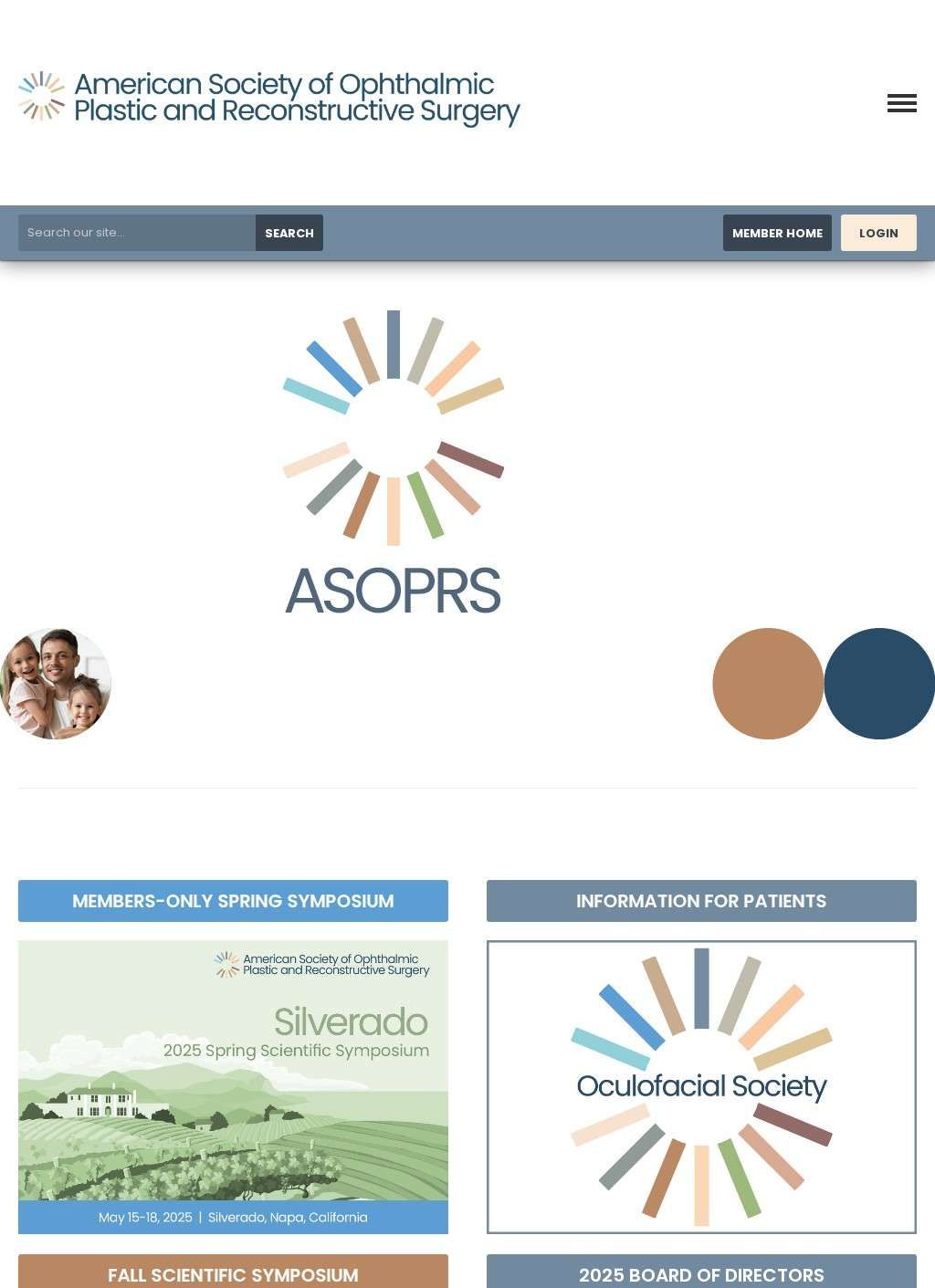The American Society of Ophthalmic Plastic and Reconstructive Surgery represents the pinnacle of specialization for surgeons performing eyelid procedures, uniting physicians who have completed the most rigorous training pathway in oculofacial surgery. These specialists begin as board-certified ophthalmologists before undertaking an additional two-year fellowship focused exclusively on plastic and reconstructive surgery of the eyelids, orbits, tear ducts, and surrounding facial structures. This unique dual expertise in both eye medicine and facial plastic surgery creates surgeons uniquely qualified to handle the delicate balance between aesthetic enhancement and preservation of visual function that eyelid surgery demands.
ASOPRS maintains exceptionally high standards for membership, accepting only about 20 new fellows annually across the United States and Canada through an intensely competitive selection process. Prospective members must complete an approved fellowship program, pass comprehensive written and oral examinations, and produce original research contributing to the field's advancement. This stringent vetting process ensures that patients seeking ASOPRS surgeons receive care from physicians who have demonstrated mastery of both reconstructive and cosmetic eyelid techniques. The society's commitment to excellence extends beyond initial certification, requiring ongoing education and adherence to ethical standards that prioritize patient safety and optimal outcomes.
Training programs approved by ASOPRS provide fellows with exposure to the full spectrum of eyelid conditions and surgical approaches, from simple skin removal to complex reconstructions following cancer excision or trauma. Fellows perform hundreds of procedures under expert supervision, developing the technical precision and aesthetic judgment necessary for consistently excellent results. The curriculum encompasses upper and lower blepharoplasty, ptosis repair, entropion and ectropion correction, tear duct surgery, and orbital procedures. This comprehensive training ensures ASOPRS surgeons can address functional problems like drooping eyelids that obstruct vision while simultaneously achieving natural-looking cosmetic improvements.
The society's educational mission extends beyond training new specialists to include continuous advancement of surgical techniques through research and collaboration. ASOPRS meetings feature presentations of innovative approaches, long-term outcome studies, and management strategies for challenging cases. Members share their expertise through peer-reviewed publications, contributing to evidence-based guidelines that shape best practices in eyelid surgery. The organization's journal publishes cutting-edge research on topics ranging from minimally invasive techniques to management of surgical complications. This culture of academic excellence ensures that ASOPRS surgeons remain at the forefront of technological advances and surgical innovations.
Patient safety initiatives led by ASOPRS establish protocols that minimize risks associated with eyelid surgery while optimizing both functional and aesthetic outcomes. The society develops comprehensive guidelines for preoperative evaluation, including assessment of tear production, eyelid position, and ocular surface health that might impact surgical planning. Standardized surgical techniques promoted through ASOPRS training emphasize preservation of eyelid function, protection of the cornea, and maintenance of natural facial expressions. Post-operative care protocols address both immediate recovery and long-term follow-up to ensure sustained results. These systematic approaches to patient care contribute to the exceptionally high satisfaction rates reported for procedures performed by ASOPRS members.
The organization's patient resources help individuals understand their options for eyelid surgery and make informed decisions about their care. ASOPRS provides educational materials explaining different types of eyelid procedures, what to expect during consultation and surgery, and realistic outcome expectations. The society's "Find a Surgeon" directory connects patients with qualified oculoplastic surgeons in their area, ensuring access to appropriately trained specialists. Patient information emphasizes the importance of choosing surgeons with specific training in periocular anatomy and the unique challenges of operating near the eyes. This educational outreach helps patients avoid complications that can arise when eyelid surgery is performed by inadequately trained practitioners.
Technological advancement through ASOPRS includes adoption and refinement of innovative surgical tools and techniques that improve patient outcomes. Members pioneer the use of technologies like CO2 lasers for incision and hemostasis, radiofrequency devices for skin tightening, and advanced suturing techniques that minimize scarring. The society evaluates emerging technologies through rigorous clinical studies before endorsing their use, ensuring that new approaches offer genuine benefits over established methods. This measured approach to innovation balances enthusiasm for progress with commitment to patient safety, preventing premature adoption of unproven techniques while facilitating access to beneficial advances.
International collaboration through ASOPRS extends American expertise globally while bringing international innovations to U.S. practices. The society maintains relationships with oculoplastic organizations worldwide, facilitating exchange of knowledge about surgical techniques adapted to different ethnic anatomies and aesthetic preferences. International fellows train at ASOPRS centers, then return home to establish high-quality oculoplastic services in their countries. These global connections prove particularly valuable for addressing the unique anatomical considerations in Asian eyelid surgery, where different attachment patterns of the levator muscle create distinct surgical challenges. Contact information for ASOPRS includes their headquarters in St. Paul, Minnesota, with phone support at 612-601-3168 and comprehensive online resources including surgeon directories, patient education materials, and professional development opportunities for members.
